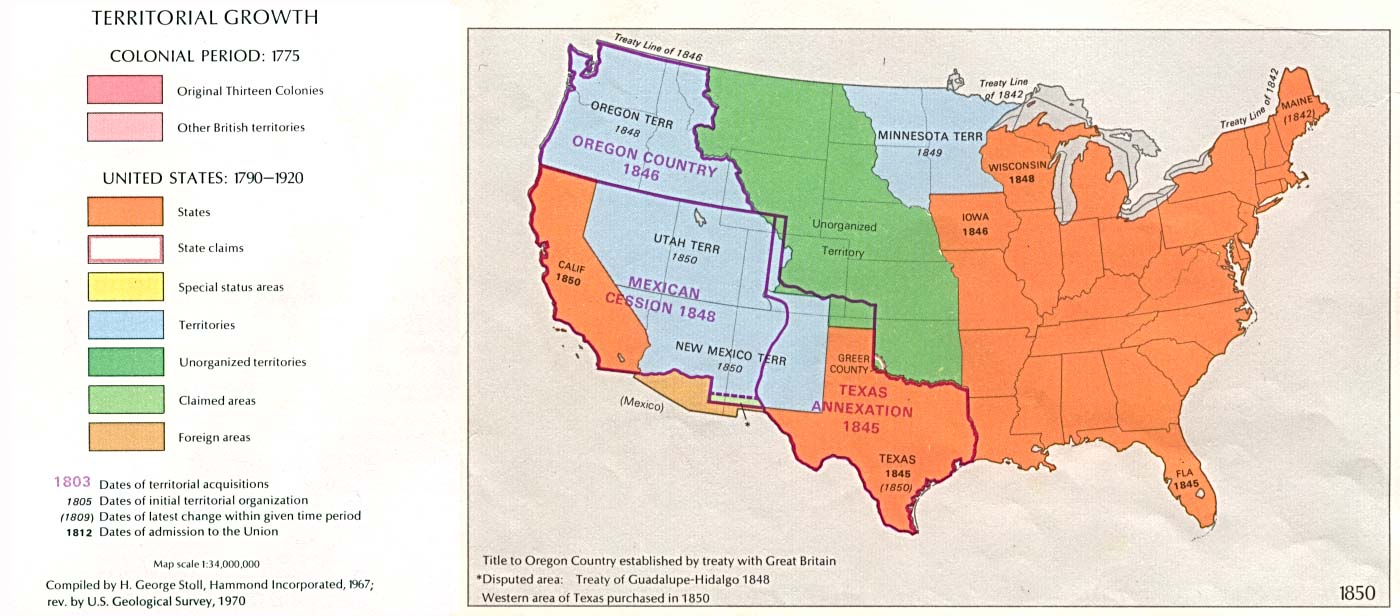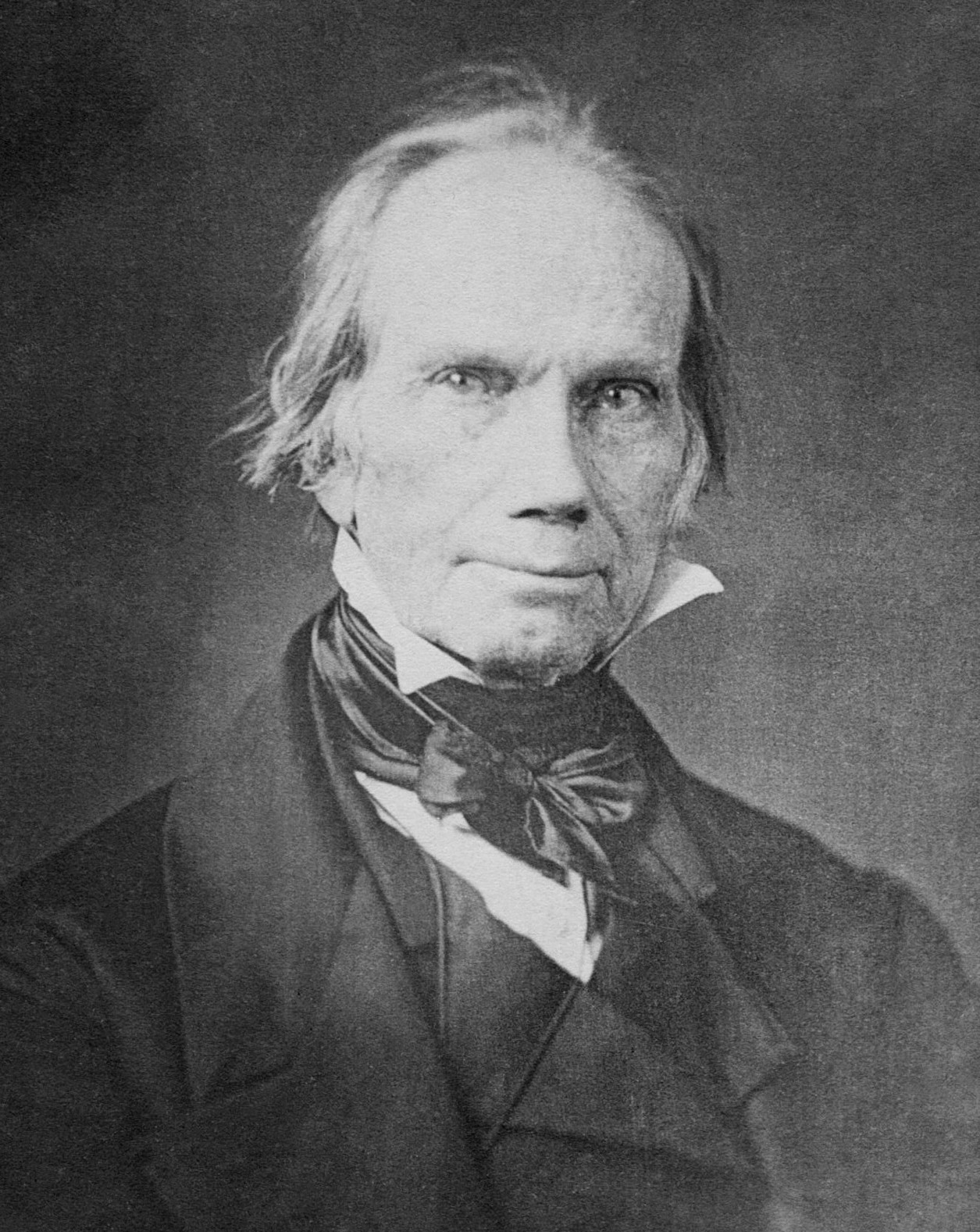Unit 4 Overview: Beginnings of Modern American Democracy (1800-1848)
8 min read•january 13, 2023
E
Eric Leiden
AP US History 🇺🇸
454 resourcesSee Units
Overview of Period 4 (1800-1848)
During this time period, the United States is expanding the economy during the Market Revolution.💰As a result, territorial expansion, influenced by the idea of Manifest Destiny 🌎, drives a variety of people westward. In addition, Sectionalism in the United States, primarily due to the issue of slavery, heightens tensions. ➗ Participation in society, economy, religion, and politics increases during this period commonly known as Jacksonian Democracy. 🗳️ Overall, the United States is growing in leaps and bounds, and with that comes some severe growing pains such as social and political conflict.
Market Revolution 💰
Henry Clay’s American System sets the stage for economic development during this period in three ways: Increases in infrastructure such as railroads, roads, and canals provide an efficient distribution of goods 🚂; tariffs support the growth of textile mills and other industries in the North; and a national bank is also established at this time, leading to further stability as well as political tension. The factory system replaces the domestic system and the demand for laborers will drastically alter typical gender roles. 👩
Manifest Destiny 🌎
The purchase of Louisiana in 1803 from France sparks the beginning of westward expansion. Ultimately, with the Treaty of Guadalupe-Hidalgo and the surrender of Mexican land from the Mexican Cession, the United States expands from east to west. 🌉🌊 Although the expansion provides natural resources, waterways, and national pride, the growth leads to intense debate over the expansion of slavery. The Missouri Compromise attempts to ease the tension in the Louisiana Purchase territory by establishing a separation of free and slave territories.

Image Courtesy of Wikipedia
Jacksonian Democracy 🗳️
Following the U.S. victory over the British in the War of 1812, we witness a rags to riches story in the advancement of Andrew Jackson. Jackson rose from being an orphan to president over the course of his lifetime, representing the triumph of the common man. During the time period, more white males vote due to the elimination of property qualifications for voting known as universal manhood suffrage. 📜 Note that although the movement called for an equal access to vote, it only applied to white males. As the time period comes to a close, we will see the growth of a feminine movement to gain more rights peaking at the Seneca Falls Convention in 1848. 🙋
Second Great Awakening ⏰
As the economy changes and the territory expands, reform movements arise to battle the side effects of massive growth. Itinerant preachers burn the candles at both ends trying to reinvigorate society’s religious apathy. The Burned Over District in New York represents the religious fervor sweeping the east coast. Charles Finney embarks on a whirlwind tour using his evangelical style to return lost souls to Christianity. ✝️ Women support, organize, and arrange many of the revivals demonstrating their ability to contribute outside the home. New religions such as the Mormons and utopian societies spread westward, further supporting Manifest Destiny. 🌎
Reform Movements 📋✅
Reform movements emerge from the Second Great Awakening. ⏰ The Temperance Movement to reduce the consumption of alcohol is spearheaded by the Beecher family. 🍸Women's Rights Movements led by Elizabeth Cady Stanton and Lucretia Mott challenge the laws restricting female rights. Horace Mann, a Massachusetts educator, is the leading crusader in attempting to bring a widespread education to the youth. 🎓 The Labor Movement begins to arise and challenge the power of the factory bosses as workers seek higher wages and better working conditions.
Abolition 🗞️
One of the most important reform movements was the abolitionist movement. Leaders like William Lloyd Garrison advocate for immediate emancipation through his newspaper, The Liberator. Frederick Douglass, likewise, advances the cause through his speaking engagements and his newspaper, The North Star.📝 Although Douglass and Garrison called for peaceful means to end the peculiar institution, Nat Turner led a slave rebellion in Virginia, resulting in the killing of numerous Blacks and Whites. Turner’s Rebellion illustrates that the peculiar institution is not a Positive Good as John C. Calhoun suggests. The Positive Good Theory advocated by Calhoun suggested that slavery provided food, shelter, clothing, and stability for the elderly compared to the harsh conditions of the factory system in the North.
Political Conflict 💥
The most famous of the political conflicts of the period arise during Jackson’s presidency. Jackson is seen as a tyrant for his destruction of the bank, the Indian Removal Act, and his use of the Force Act in the Nullification Crisis. 💢 Although some argue that his policies toward Indians and banks were made to support the common man, others would claim he was violating the constitutional rights of the Cherokee and destroying the nation’s economy. Jackson’s policies lead to the creation of the Whig Party led by Henry Clay with the purpose of challenging the power of Andrew Jackson. 📢

Henry Clay, Image Courtesy of Wikipedia
Judicial Nationalism ⚖️
The Second Great Awakening ⏰ and Manifest Destiny 🌎 both place the institution of slavery in the forefront. Abolitionist supporters in politics and society advocate for the emancipation of enslaved people. The tension escalates during this time period, and following the Mexican-American War, slavery becomes the central topic in politics.
The Supreme Court began to flex its muscles during this time period. Chief Justice John Marshall expanded the power of the court with his 1803 Marbury vs. Madison ruling that established the principle of Judicial Review. Later, the case of McCulloch vs. Maryland reinforces the idea of implied powers of the constitution in supporting the creation of a national bank. 💵
Major People and Events:
Thomas Jefferson: Anti-federalist and Democratic-Republican president supporting loose construction of the constitution, strong state governments, support for the French Revolution, and an agrarian nation.
Louisiana Purchase: Historic purchase of land by Jefferson from France which most importantly gave the U.S. the port of New Orleans.
John Marshall: Powerful supreme court chief justice who for three decades expanded the power of the judicial branch.
Marbury vs. Madison: Landmark case in 1803 establishing the principle of judicial review.
James Madison: Democratic-Republican U.S. president during the War of 1812.
Impressment: Practice of forcing American sailors to serve in the British navy. Impressment was one of the most important causes of the War of 1812.
War of 1812: War between the U.S. and Britain over impressment, trading issues, and violations in which the U.S. defeated England and signed the Treaty of Ghent.
Monroe Doctrine: Statement by President James Monroe advocating for American dominance in the Western Hemisphere.
American System: Plan by Henry Clay including the creation of a national bank, implementation of tariffs, and creating of infrastructure in order to stabilize the American economy.
Tariff of Abominations: Tariff passed during Jackson’s presidency that creates tension between the agricultural south and industrial north.
Missouri Compromise: Agreement created by Henry Clay allowing for slavery to exist below the 36’30” line of the Louisiana Purchase.
Sectionalism: The rising of tension between the North and the South based on economic, religious, and cultural differences which will ultimately lead to the Civil War.
Indian Removal Act: Law supported by Andrew Jackson displacing multiple Native groups from the Southeast. Ultimately led to the horrific and inhumane Trail of Tears.
Whigs: Political party led by Henry Clay created to undermine the power of Andrew Jackson.
Second Great Awakening: Religious movement led by Charles Finney designed to reinforce Christian principles and will lead to multiple reform movements.
Horace Mann: Massachusetts educator influential in improving teaching standards and elevating the process of education to be more practical.
Temperance: The movement to eliminate alcohol spearheaded by the Beecher family.
Seneca Falls Convention: Monumental women’s rights conference challenging current laws and ultimately launching the women’s suffrage movement.
Abolitionism; The desire to end the institution of slavery.
William Lloyd Garrison: Editor of The Liberator newspaper supporting the abolition of slavery.
Frederick Douglass: Ex-enslaved person, editor of The North Star advocating for abolition.
Manifest Destiny: Coined by John O’Sullivan, supporting the expansion of the United States from the Atlantic Ocean to the Pacific Ocean.
Treaty of Guadalupe Hidalgo: Treaty ending the Mexican-American War and proving the Mexican Cession to the U.S.
Main Events
1803: Louisiana Purchase / Marbury vs. Madison
1812-1815: War of 1812
1816-1824: Era of Good Feelings
1819: Panic of 1819
1823: Monroe Doctrine
1824: Corrupt Bargain
1831: Nat Turner’s Rebellion
1835: Trail of Tears
1845: Texas Annexation
1848: Treaty of Guadalupe-Hidalgo / Seneca Falls Convention
Major Themes
- America’s economy begins to expand westward through transportation improvements based on improved technology such as the steam engine and canals. 🚂
- Regional economies begin to develop creating sectionalism between the agricultural South and the industrial North. Sectionalism ➗ intensifies over the issue of tariffs which tended to support the North at the South’s expense.
- Politically, the office of the president expands its power under President Jefferson with the Louisiana Purchase 💵 and the Barbary Wars. Under President Jackson, executive power is challenged by the emerging Whig Party.
- The movement westward continues to drive native societies further west as illustrated by the Trail of Tears. 💧In addition, new territories provide the opportunity for religious groups such as the Mormons to create western settlements.
- The reform movements stimulated by the Second Great Awakening ⏰ calls for women’s rights, abolitionism, temperance, labor reform, education reform, and prison reform. All reforms demonstrate a growing desire for expansive participatory opportunities.
📽️ Watch: AP US History - Unit 4 Heimler's History Review
How to study unit 4?
We suggest making sure to create a study plan and set up your study space with a good environment. Make sure to have a good grasp on the key timeline and know your historical figures! To help with your productivity, especially during the last few days before the exam, you should use a pomodoro study timer to break up your sessions into intervals and make time for breaks. It is also hugely beneficial to study with friends so that you can motivate one another and crush the APUSH exam together! 🙌🏾
Browse Study Guides By Unit
🌽Unit 1 – Interactions North America, 1491-1607
🦃Unit 2 – Colonial Society, 1607-1754
🔫Unit 3 – Conflict & American Independence, 1754-1800
🐎Unit 4 – American Expansion, 1800-1848
💣Unit 5 – Civil War & Reconstruction, 1848-1877
🚂Unit 6 – Industrialization & the Gilded Age, 1865-1898
🌎Unit 7 – Conflict in the Early 20th Century, 1890-1945
🥶Unit 8 – The Postwar Period & Cold War, 1945-1980
📲Unit 9 – Entering Into the 21st Century, 1980-Present
🚀Thematic Guides
🧐Multiple Choice Questions (MCQ)
📋Short Answer Questions (SAQ)
📝Long Essay Questions (LEQ)
📑Document Based Questions (DBQ)
📆Big Reviews: Finals & Exam Prep
✍️Exam Skills (MC, SAQ, LEQ, DBQ)

Fiveable
Resources
© 2023 Fiveable Inc. All rights reserved.